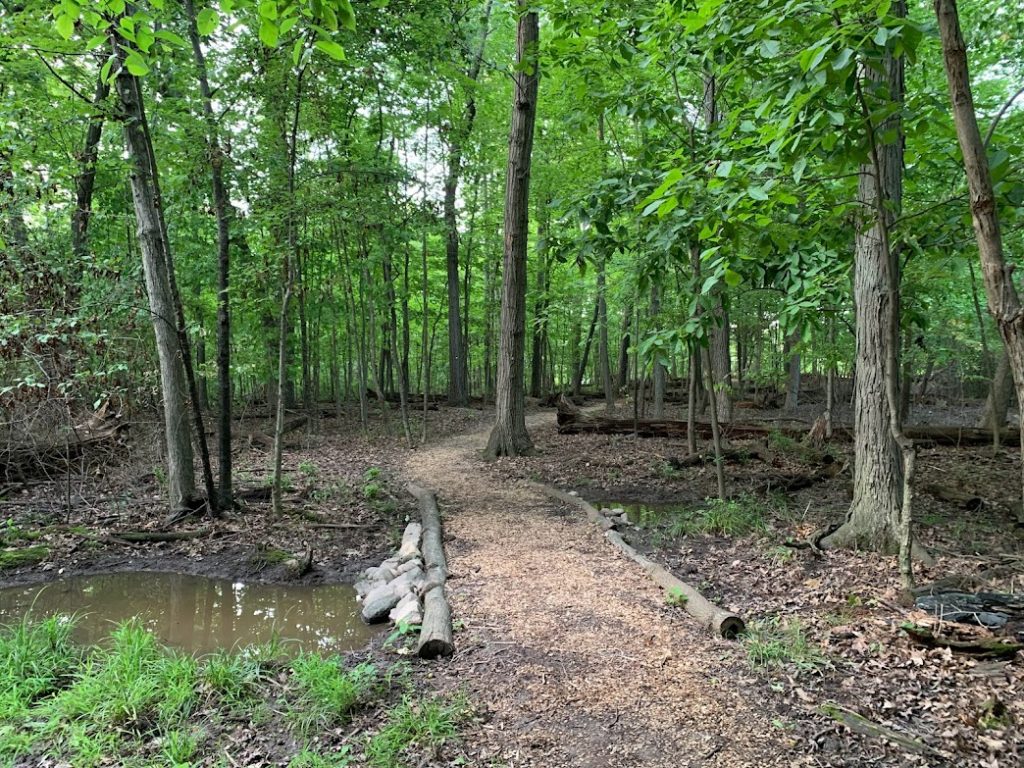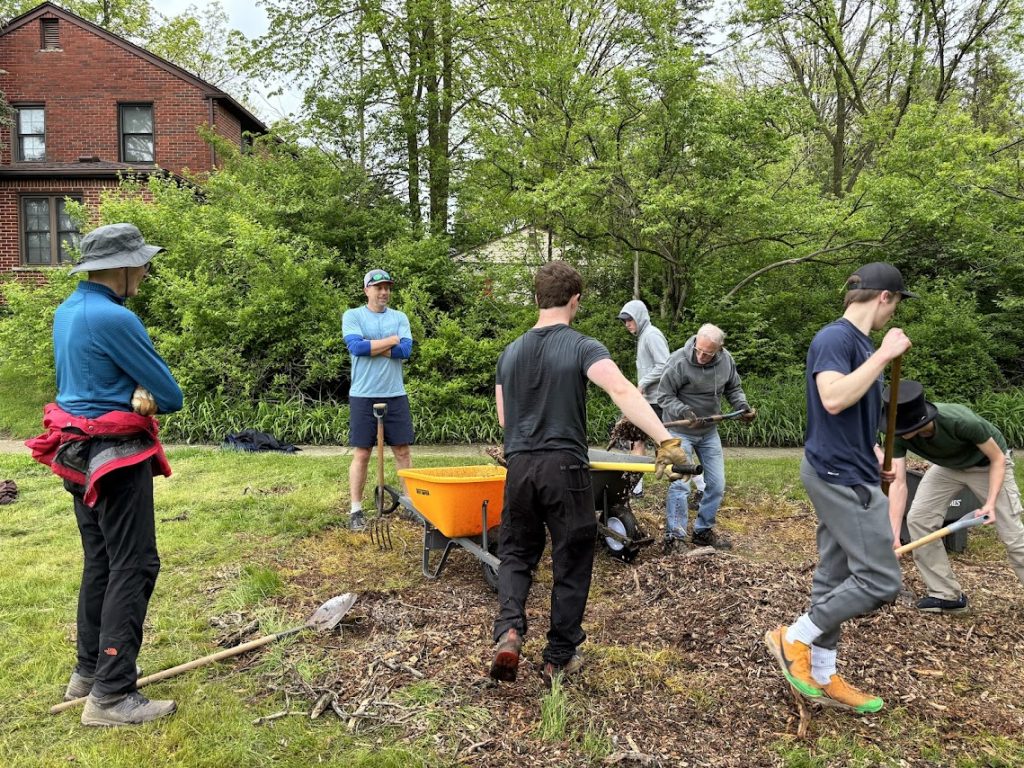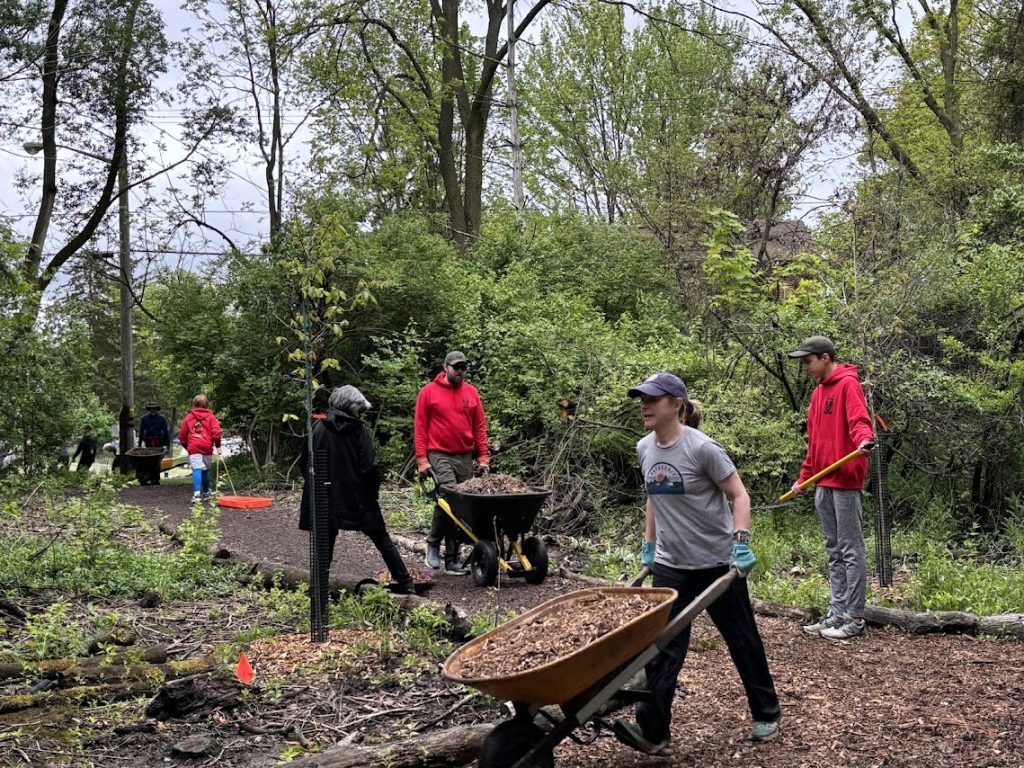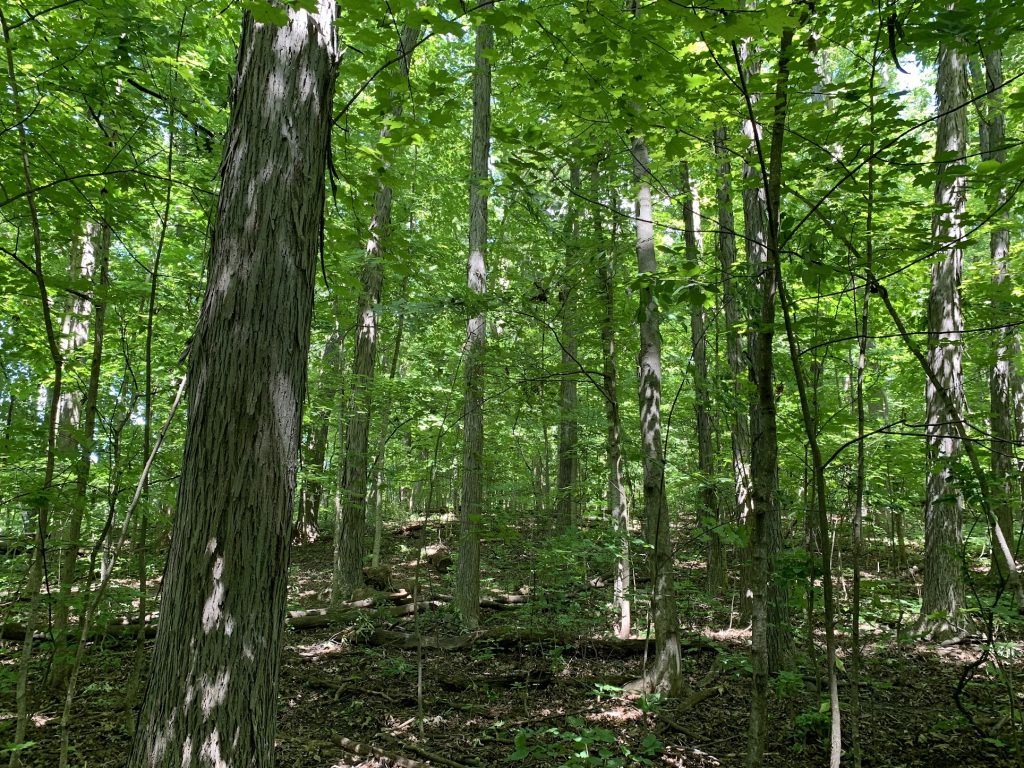Pioneer Woods Nature Area adjoins Greenview Nature Area to the north. Deciduous trees typical of southeast Michigan, such as oak, hickory, sycamore, maple, and black cherry, make up much of the woods. Groupings of pine and spruce add evergreen cover. The forest provides shelter and breeding habitat for many birds, amphibians, and other wildlife. Several walking trails run through the area, offering access to this natural space




Friends of Greenview Stewardship
Friends of Greenview and Pioneer Nature Area actively care for the trails and woodlands of Pioneer Woods. We maintain woodland paths by clearing fallen trees, spreading mulch, and rebuilding bridges to ensure safe and accessible trails. After storms, we assess and repair damage, and we continue to improve drainage in wet areas with culverts and trail resurfacing. We also organize volunteer workdays to help with trail upkeep, including spreading woodchips on heavily used sections.






Our work also focuses on ecological restoration. We remove invasive species like buckthorn and honeysuckle using mechanical, chemical, and controlled burn methods. In areas cleared of invasives, we plant native trees and shrubs and sow native seed to reduce regrowth and support biodiversity. For example, we recently planted several Swamp White Oaks near the Glen Leven entrance with help from Pioneer High School students.




Seasons of Pioneer Woods
The Pioneer Woods supports a diverse collection of native plants including many spring blooming wildflowers. In early spring you can find Spring Beauty, Broad-leaved Toothwort and large colonies of Yellow Trout Lilies. There are also Jack-in-the-pulpit, Wild Geranium, Mayapple and False Solomon Seal.





In spring, the air in Pioneer Woods is filled with the sounds of birdsong. In this recording, you can hear American Robins, Red-bellied Woodpeckers, Downy Woodpeckers, and Cardinals.
Mourning Cloak and Eastern Comma butterflies are among the first signs of spring in Pioneer Woods.


In summer, Pioneer Woods offers cool shade beneath a canopy of mature trees. The forest floor supports a variety of plants such as sedges, ferns, and Virginia creeper.




As temperatures drop, the forest comes alive with vibrant autumn colors, while an abundance of nuts and acorns fuels the preparations of wildlife getting ready for winter. Black walnuts, hickory nuts, acorns, and pinecones are favorites of chipmunks and squirrels.



Warm fall rains bring out a variety of mushrooms on the forest floor—look for them on tree stumps, fallen logs, and among leaves and grasses. Their many shapes and colors are a delight to discover.








In winter, Pioneer Woods transforms into a quiet, serene landscape. The woods remain an important place for birds and other animals seeking shelter and food.




